Using slow-shutter time-lapse photography techniques in video and film production is nothing new per se however, the advancement of camera technology and mounting devices is making capturing these dynamic shots easier then it has ever been, if you know what you're doing.
Slow-shutter time-lapse produces unique and very different results than ordinary time-lapse because it allows the movement in the image to blur (to varying degrees) depending on how much blur is desired for the shot. Ordinary timelapse can have a staccato or jumpy feel to it so to produce a higher quality shot with more artistic value we’re going to slow the shutter down.
You can employ this method on any still camera with a intervelomoter but I’m going to demonstrate with my Lumix GH4. I picked up the GH4 a while back to use with my multi-rotor for aerial production but while playing around with it on another job I found a feature that my clients are really in love with.  The GH4 will automatically assemble all of the stills from a time-lapse and generate a video file. Some other cameras do this as well not but remember it's slow-shutter that we're after. If you shoot and edit your own projects this feature may not be that important to you but for my clients, I usually hand off the footage at the end of the day or the end of the project, then an editor in some distant land has to sift through all of the material I’ve acquired. If I deliver thousands of still frames of unrendered timelapse it creates a lot of work for the editor and if he’s on a tight budget or schedule those frames may never see the finished piece. If you've been in production for a while you know that the easiest shots to locate and drop onto the editing timeline will be the shots
The GH4 will automatically assemble all of the stills from a time-lapse and generate a video file. Some other cameras do this as well not but remember it's slow-shutter that we're after. If you shoot and edit your own projects this feature may not be that important to you but for my clients, I usually hand off the footage at the end of the day or the end of the project, then an editor in some distant land has to sift through all of the material I’ve acquired. If I deliver thousands of still frames of unrendered timelapse it creates a lot of work for the editor and if he’s on a tight budget or schedule those frames may never see the finished piece. If you've been in production for a while you know that the easiest shots to locate and drop onto the editing timeline will be the shots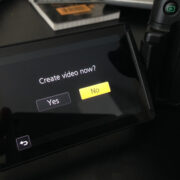 that get used first. Being able to deliver finished slow-shutter time-lapse files along with the rest of the daily material has been a great asset in my toolbox recently. A few weeks ago I was unable to take a job for a network news client of mine. Because my slow-shutter shots (which were not asked for) had become such a part of the look and feel of a previous show, they had this exact setup overnighted so they could take it on the next shoot. The GH4 preserves the stills so for higher quality and more control you can always go back to the stills if necessary.
that get used first. Being able to deliver finished slow-shutter time-lapse files along with the rest of the daily material has been a great asset in my toolbox recently. A few weeks ago I was unable to take a job for a network news client of mine. Because my slow-shutter shots (which were not asked for) had become such a part of the look and feel of a previous show, they had this exact setup overnighted so they could take it on the next shoot. The GH4 preserves the stills so for higher quality and more control you can always go back to the stills if necessary.
Setup
First, you’re going to need some ND (neutral density filters) for your lens…. a lot of it. For the GH4 during the daytime I typically have to use two 1.2 density ND filters to get the exposure time slow enough. Make sure you use quality filters as shooting through this much ND could make your image soft with cheap glass. You’ll have to test the amount of ND needed to get your camera and lens to the exposure time needed. You can use a variable ND filter also but I prefer standard filters. The reason you need ND filters is to reduce the amount of light coming into the camera. A normal lens will not stop-down enough to allow for this degree of slow shutter speed during the daytime and sometimes night.
If your camera does not have a built-in intervelomoter you will need an external one. There are many cheap versions available but it's worth the money to get one made by the manufacturer of the camera.
I have two initial camera setups for a couple different types of shots. One for where the camera will be mounted to a moving object like a car or train and one for where the camera will be stationary with things moving around it.
-When the camera is mounted to a car and traveling at normal in-town speeds I set the shot for ½ second exposure every second. The stop-and-go nature of in-town surface street traffic works really  nicely with slow-shutter time-lapse. The effect of this can sometimes be too much when on a highway or interstate but in stop-and-go traffic you get the sense of going in and out of the "warp" effect created by the slow shutter. Adding some foreground to the frame adds a lot of value to the shot as well if it fits with the story you're telling. You could use a piece of the hood or mirror of a car to be a fixed focal point to contrast the busy motion of the time-lapse.
nicely with slow-shutter time-lapse. The effect of this can sometimes be too much when on a highway or interstate but in stop-and-go traffic you get the sense of going in and out of the "warp" effect created by the slow shutter. Adding some foreground to the frame adds a lot of value to the shot as well if it fits with the story you're telling. You could use a piece of the hood or mirror of a car to be a fixed focal point to contrast the busy motion of the time-lapse.
-When the camera is stationary I set the shot for 1 second exposures taken each second. With this type of shot try to find a frame where the movement in the shot will be large enough to be a significant part of the frame. This is ideal for buildings with clouds moving through the sky, cityscapes with traffic/trains/airplanes/boats in the foreground. This is also great for pedestrian movement in busy areas. 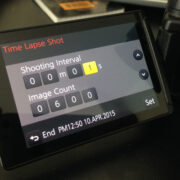
These are just a jump off points and you will need to play around with the settings to find the right amount of motion-blur and timelapse speed for your shot. The exposure time controls the amount of motion-blur and the amount of shots-per-second controls the speed of the timelapse. If you want your timelapse to move faster you would decrease the amount of shots-per-second. For example, if you start out at 1 shot per second and you want to speed up the timelapse you could decrease the frequency to one shot every 2 or 3 seconds however, for the smoothest effect, more frequency is better. You can always speed up the entire timelapse in post but the amount of blur and the smoothness of the timelapse have to be captured in-camera. Another great thing about using the GH4 with the "create video" feature is that you have instant feedback and can analyze your shot to make adjustments in the field. This really helps you get better results than waiting to see what happened when you assemble the shots at a later time.
4) Of course I do all of this with the help of an amazing RigWheels product, the RigMount X. The RigMount X is a incredibly strong magnetic camera mount that makes secure mounting faster and easier then you’ve ever experienced. 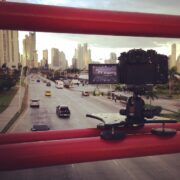 One of the main complaints or objections I used to get from producers regarding driving and timelapse shots was the amount of time it would take to rig and execute the shot. The RigMount X makes the process so easy I don’t even have to be given time to do this anymore.Typically I steel these shots while in-transit or on location by keeping this setup built and then just keeping my eyes open for interesting opportunities. The "set it and forget it" nature of working with magnets is what makes this so simple and hands-off.
One of the main complaints or objections I used to get from producers regarding driving and timelapse shots was the amount of time it would take to rig and execute the shot. The RigMount X makes the process so easy I don’t even have to be given time to do this anymore.Typically I steel these shots while in-transit or on location by keeping this setup built and then just keeping my eyes open for interesting opportunities. The "set it and forget it" nature of working with magnets is what makes this so simple and hands-off. 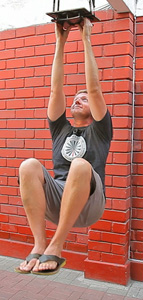 Magnets never loose their strength so you don't have to have someone babysitting a suction device to make sure it stays attached. 5 Minutes with this rig stuck to a car or a lamp post can get you a shot that can have more visual impact than what is normally accomplished in hours. Our magnets have a protective coating so they won’t damage the surface that you’re attaching to and for those of us who remember tape, magnets do not affect flash memory. You can also use different types of suction cups with this mount when you encounter surfaces that won’t work with magnets. The RigMount X works equally as well without being attached to anything. Put it on the ground or tabletop and it’s a solid mounting platform because the magnets work as feet. Each magnet can hold up to 50 pounds but for a mounting tool like this numbers are a bit arbitrary. When you feel this mount grab on to a surface for yourself, any concerns you may have about this method will disappear. Seeing peoples reaction to the strength of this tool at trade shows and on-location is one of my favorite experiences as a manufacturer and once you try one, I’m sure it will become a permanent part of your kit. (more details about the RigMount X here)
Magnets never loose their strength so you don't have to have someone babysitting a suction device to make sure it stays attached. 5 Minutes with this rig stuck to a car or a lamp post can get you a shot that can have more visual impact than what is normally accomplished in hours. Our magnets have a protective coating so they won’t damage the surface that you’re attaching to and for those of us who remember tape, magnets do not affect flash memory. You can also use different types of suction cups with this mount when you encounter surfaces that won’t work with magnets. The RigMount X works equally as well without being attached to anything. Put it on the ground or tabletop and it’s a solid mounting platform because the magnets work as feet. Each magnet can hold up to 50 pounds but for a mounting tool like this numbers are a bit arbitrary. When you feel this mount grab on to a surface for yourself, any concerns you may have about this method will disappear. Seeing peoples reaction to the strength of this tool at trade shows and on-location is one of my favorite experiences as a manufacturer and once you try one, I’m sure it will become a permanent part of your kit. (more details about the RigMount X here)



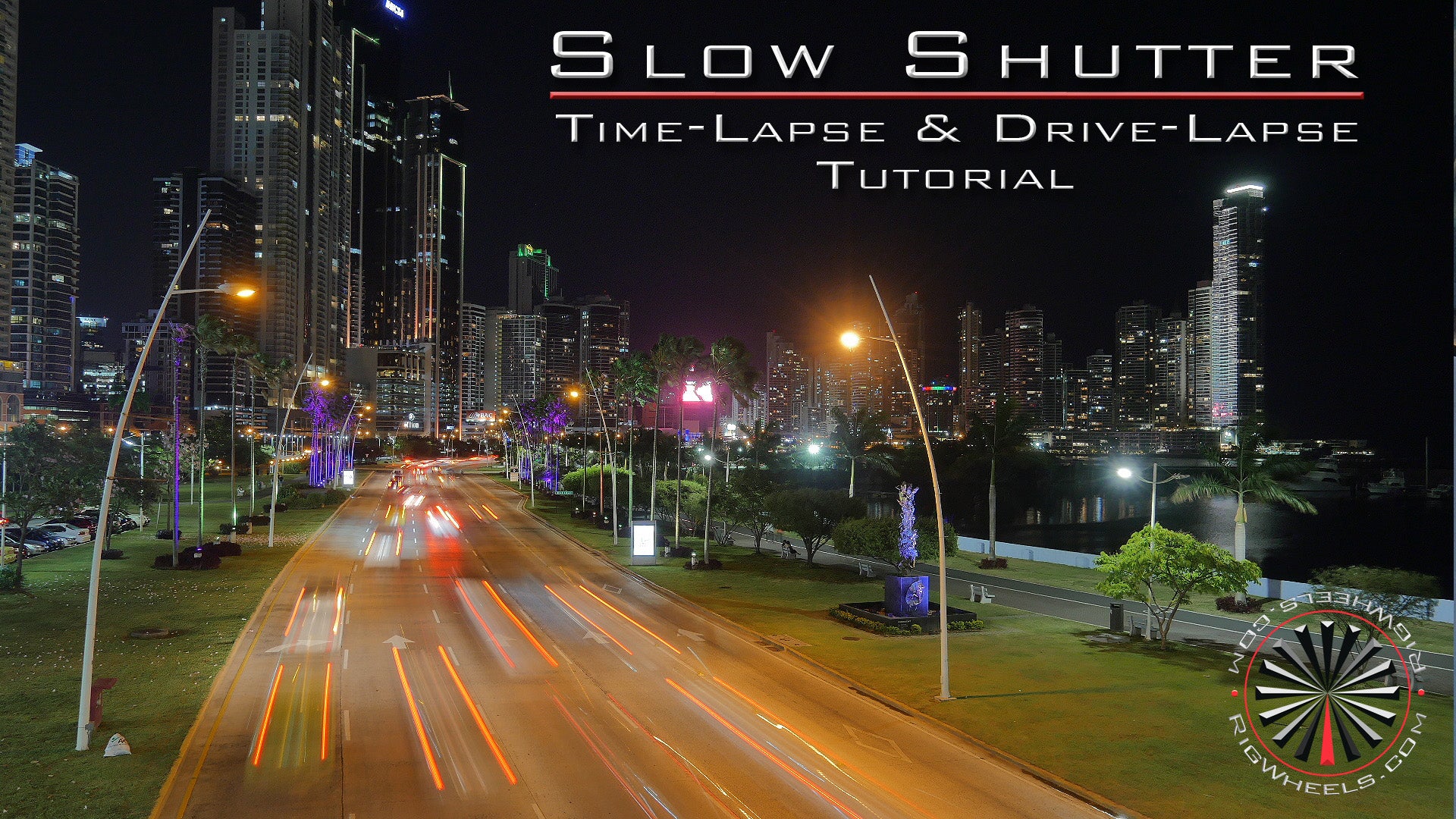
Share:
PT-Zero Wins "Best of Show" at Infocomm 2025.